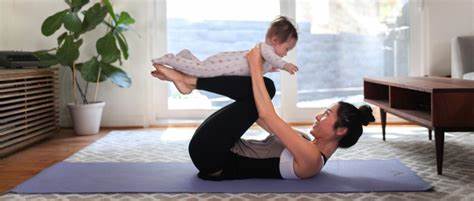Post-Natal Physio Exercises
Post-natal physio exercises help women restore body movement, strengthen pelvic floor muscles, introduce relaxation and breathing techniques, and improve general well being in a sensitive period when both the mother and the baby need extra care.
Postpartum is a period of change and adaptation. Dedicating adequate time to post natal physio exercises can help you prevent ongoing pregnancy-related issues. Your body still needs a lot of rest and your muscles, joints, and ligaments are not in the same condition as they were before pregnancy.
You can start by slowly restoring body strength 6 weeks after delivery. Gradually increase exercise intensity after 12 weeks.
Benefits of Post Natal Physiotherapy
Regular exercise after birth has numerous health benefits, including:
- Weight loss. Apart from you monitoring calorie intake and breastfeeding, a physiotherapist can devise a postpartum exercise plan to increase aerobic fitness, and improve the tone of abdominal muscles and overall muscle strength.
- Pelvic floor strengthening. Signs of a weak pelvic floor after birth include accidental urine leakage and bowel movement, vaginal heaviness or aching, and a constant need to pee. A pelvic floor exercise specialist can help you work out gently and slowly to regain strength in the sensitive area, as doing intense workouts can worsen symptoms and extend post-natal rejuvenation.
- Psychological well-being. Social interaction after birth is a lateral benefit of post-natal physiotherapy, It can improve the new mum’s mood, and decrease stress and anxiety to prevent post-natal depression.
Everyone should visit a post-natal physiotherapist six weeks after birth to get a potential injury screening and agree on a post-delivery exercise program to regain strength and overall fitness. Doing prenatal physiotherapy before birth can help you with post-natal goals, as well.
Common Exercises After Childbirth
A stronger back, spine, and abdomen, less pain during and after delivery, and improved flexibility of the lower limbs are only a few of the advantages you will enjoy when you exercise regularly
- Kegel (Pelvic floor) exercises. You can do Kegels sitting and lying on your back. Before you start, it is important to identify the right muscles. If you’re unsure whether you’re squeezing the right muscles, insert a finger in the vagina: if you feel pressure, you’re doing the exercise the right way. Sit and lean forward. Squeeze the pelvic floor muscles, hold for several seconds, and release. Breathe normally as you do the exercise. Repeat 2 to 3 times per day. Little by little, you will be able to hold the pelvic floor squeezed for longer.
- Diaphragmatic breathing. Belly breathing or breathing with the diaphragm involves engaging the diaphragm and the abdominal muscles to fill the lungs to their maximum capacity. Use the stomach muscles to pull the diaphragm downward as you breathe in. Diaphragmatic breathing fills tissues with oxygen, improves circulation, and helps full-body relaxation.
- Walking. Walking will probably be the first post-natal exercise you can start as soon as you feel comfortable standing on your feet. Walking restores muscle strength, energizes your body postpartum, enhances cardiovascular strength, and aids with weight loss.
- Bird dog holds. Bird dog hold is an excellent post-natal exercise to strengthen the lower back and improve posture and range of motion after delivery. Start on all fours in a tabletop position. Lengthen your back by drawing your shoulder blades together. Keeping hips and shoulders parallel to the floor raise your right arm and left leg and hold for several seconds. Switch arm and leg and repeat on the other side.
- Cat-Cow pose. The popular yoga pose is regularly recommended in postnatal physical therapy. Begin in a tabletop position with your hands shoulder-width apart. Inhale as you curve your back down and lift your head to bring it into a “cow” position. Exhale and curve the back up to the highest arch by tucking the belly in and bringing it into a “cat” position. Repeat several times.
- Glute bridge. You can perform the glute bridge with or without a stability ball. It is more effective and challenging in the second variation. Lie on the floor with your face up, knees bent, and both feet on the floor. Raise the hips in the air, at the same time pressing the heels into the floor or the stability ball, and squeezing the glute muscles. Try to remain in a straight line from the knees to the head as you rest your body on the shoulders and the upper back.
- Plank holds. Planks are isometric exercises that place a lot of weight on the spine and require a strong and functional core. Although planks are not recommended during the first four months after birth, you will benefit greatly from them later as you have recovered your health with easier postnatal exercises. Consult with your postnatal physiotherapist about when is the best time to start planking.
- Side bridge. The side bridge, also called the side plank, is safe to do post-partum. You can modify the exercise by adding leg lifts to each side.
Water-based sports such as swimming, water aerobics, and hydrotherapy are excellent to improve conditioning and bond with the baby after delivery. Find a heated pool and an expert in postnatal physiotherapy who can advise on the moves and keep an eye on you and the baby as you enjoy safe and relaxing movements as early as cessation of bleeding after delivery.

